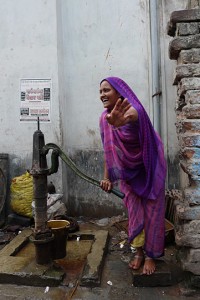From Permission to Forgiveness
 There are two kinds of street photography: what I call permission photography and forgiveness photography.
There are two kinds of street photography: what I call permission photography and forgiveness photography.
In permission photography, which is they type I normally do, you walk up to individuals and groups you meet on the street, establish contact, and gain permission to take their picture. It can take anywhere from 3 seconds to over an hour, depending on the situation and context, but the point is that the subject has given permission to have their picture taken.
There is a level of trust, eye contact, and often some control over the framing and positioning of the shot in permission photography. These are usually plusses. On the downside, the pictures are less spontaneous and can feel posed or static. In physics as in psychology, this is known as the Observer Effect: people often behave differently when they know they are being observed.
And then there is a second type of street photography, what I call forgiveness photography. This simply involves taking pictures before or without the subjects realizing that they are being photographed. Hence, when inevitably some of them do realize you’ve poked a voyeur’s eye into their daily existence, the need to smoothly patch things over with friendliness and reassurance–i.e. the forgiveness.
Forgiveness photography, like photojournalism, often feels more “real” or raw. It’s people in motion versus people stopped.
Given that I’ve been doing about 80/20 permission vs. forgiveness photography so far on this trip, in Calcutta I decided to reverse these. My focus and task, in this city, would be on capturing the immediacy of unposed moments and reality of life unscripted…
 Click to subscribe via RSS feed
Click to subscribe via RSS feed

The presence of a camera always changes behavior. As in psychology, in photojournalism, or documentary photography, the only way to avoid observer effects is to use unobtrusive measurements in which the subject is not aware of being observed or to act quickly and discreetly. The pictures usually depict a certain perspective of the photographer and this is why this makes it so interesting and individual.
I read the portfolio of photographer Andy Kho and quite liked it. Here it is, sharing with you all:
“I work with basic gear as I believe that the greatest images are captured by the heart and soul through the artistic eyes of the photographer and in the most decisive manner possible …
my motto “the world is my studio…
And I pray that the images that I create will have life changing and positive impact on people’s life.
I’m a painter who paints with light…”
Hmmm, I don’t remember you ever asking for permission or forgiveness… oh wait, we’re talking about photography! 😛